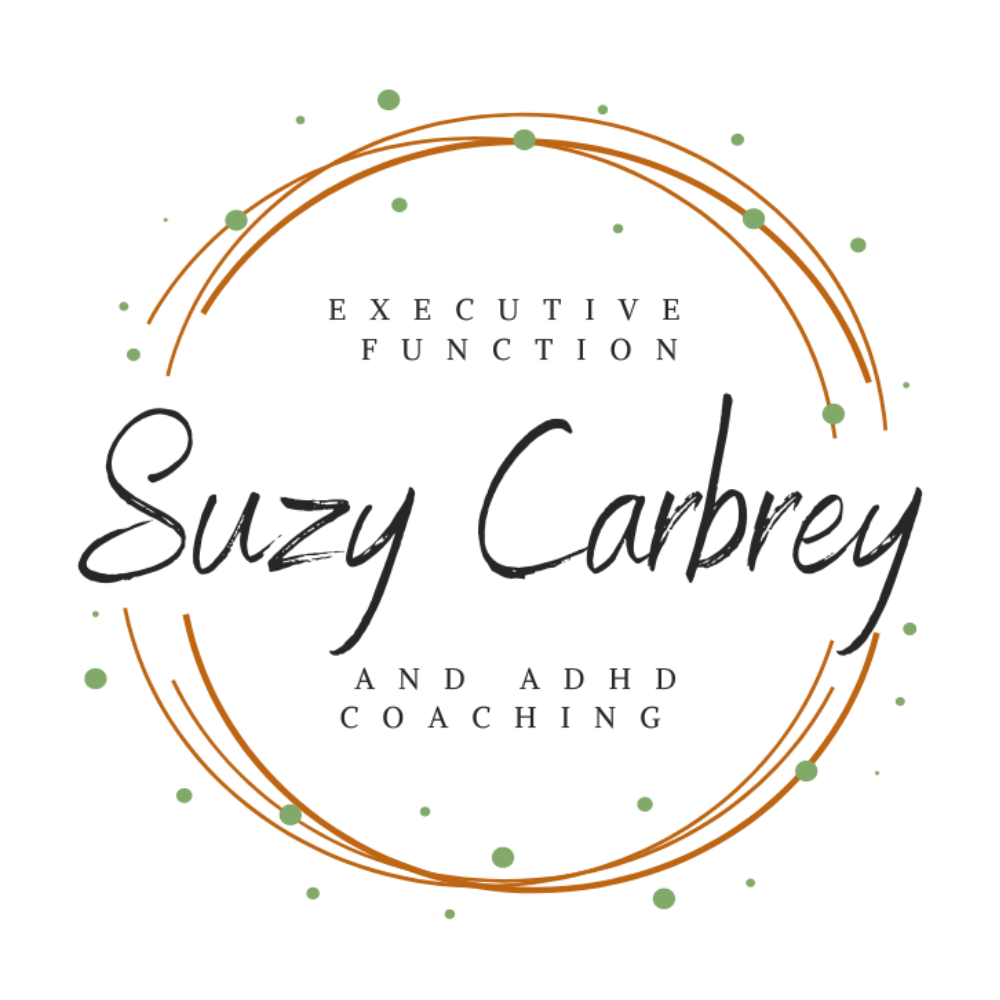Step One: Normalize the Cycle
That “falling off the wagon” feeling is often a sign that you’ve outgrown a strategy, or that your brain is seeking new stimulation. What used to feel motivating now feels stale. That’s not sabotage, it’s just the ADHD brain doing what it does.
The traditional productivity world often glorifies consistency as the holy grail. But for neurodivergent folks, consistency is sometimes the wrong goal. What’s more helpful is reliability with flexibility, having a system that can ebb and flow with you, not one that breaks the second life throws a curveball.
Step Two: Reframe Setbacks as Data
When something stops working, it doesn’t mean it never worked. It means it worked… until it didn’t. And that’s valuable information.

Instead of beating yourself up for “quitting” or “failing,” try asking:
- What was working before?
- When did it start to feel harder?
- What changed, internally or externally?
- What patterns do I see when this happens?
- What might help this time?
This turns your “setback” into a learning opportunity. You’re not starting from scratch, you’re starting from experience. Every restart is an experiment. A chance to tweak, upgrade, or swap in something new. And that means you’re growing.
Step Three: Watch Out for Shame
Shame is sneaky. It tells you that if you couldn’t stick with it before, you shouldn’t even bother trying again. That voice says things like:
- “You always quit.”
- “You’re so disorganized.”
- “Why even try? You’ll just mess it up.”
This is not the truth—it’s shame talking. And shame is a terrible motivator. It freezes us. It disconnects us from our strengths. It keeps us stuck in the past.
What helps? Compassion. Curiosity. Encouragement. Try shifting the internal narrative:
- “I’ve hit a bump, time to reassess.”
- “What might help me re-engage?”
- “Every attempt is movement forward, even if it’s messy.”
The more you can practice a shame-free restart, the easier it becomes to step back into action. Think of it like cleaning up your house. You don’t scold yourself for needing to tidy again, you just get back to it, maybe with a new playlist or some help from a friend.
Step Four: Celebrate the “Two Steps Forward, One Step Back” Pattern
Progress isn’t linear. Let me say that again for the people in the back: progress is not linear.
The real pattern for most people, especially those with ADHD, is two steps forward, one step back. And you know what? That still counts as progress. You’re still one step ahead of where you started.
When we only celebrate the “streak,” we miss the growth that happens in the restart. The one step back is often where the most insight lives. That’s where we learn what really helps, what to adjust, and how we want to move forward.

Start keeping track of restarts, not just wins. They matter just as much. They show your persistence, your willingness to try again, and your growing understanding of what you need.
Step Five: Build a Toolbox, Not a Single Solution
Here’s the truth: your brain likes novelty. And strategies have a shelf life.
Something might work beautifully for three weeks. And then your brain adapts or gets bored. That’s not failure. That’s just your brain being your brain.
So instead of searching for “the one perfect system,” build a toolbox. Collect different strategies, tools, and supports. Then cycle through them when needed.
Some examples of toolbox items:
- Visual schedules
- Timers or alarms
- Body doubling
- Habit trackers
- Theme days (e.g., “Admin Mondays”)
- Paper planners or digital calendars
- Morning check-ins or weekly reviews
- External accountability (friends, coaches, apps)
The key is to treat these tools like spices in your kitchen; you don’t need to use all of them every day. But it’s great to have options when you’re cooking up a new plan.
Step Six: Keep a Master List of What’s Worked Before
You know those moments when your energy crashes and everything feels like too much? That’s not the time to brainstorm a fresh system from scratch, it’s the time to lean on what’s already helped you before.
But here’s the thing: when you’re in a slump, it’s almost impossible to remember what worked. That’s why keeping a master list of past strategies can be a total game-changer.
This list becomes your personal troubleshooting guide. A menu of strategies you’ve used in the past, even if they only worked for a short time. If it helped once, it might help again.
Include:
- Routines you’ve liked
- Tools that supported you (timers, apps, sticky notes)
- Environments that felt motivating
- Self-talk phrases that gave you a boost
- Systems that felt “just right” for a while
- Even little hacks, like “work at the library” or “light a candle before writing”
You can keep your list in a notes app, a dedicated notebook, a digital doc, or even a sticky note on your desktop. The point is: make it easy to access when you’re in that “I can’t do anything” headspace.
You might label it something inviting, like:
- “Things That Help Me”
- “Jumpstart Ideas”
- “What’s Worked Before”
- “ADHD Toolkit – Greatest Hits”
Review and add to it regularly, especially after one of those “rework strategy” sessions. Over time, this becomes a self-made user manual for your brain, built with kindness, insight, and real-life experience.
Step Seven: Know When It’s Time to Rework Your Strategies
Sometimes you can feel it, the friction starts building. You’re procrastinating more. You’re forgetting appointments. You’re dreading routines that used to feel easy.
These are red flags. They’re your brain’s way of saying, “Hey, something needs to change.”
You can wait until things break… or you can intentionally build in a time to reassess. I personally do this seasonally and have a recurring event on my calendar titled “Rework Strategies.”

During this time, I ask myself:
- What’s still working?
- What feels clunky or forced?
- What’s new in my life or energy that might shift how I operate?
- What do I need to let go of?
- What do I want to try instead?
Sometimes I change nothing. Other times, I overhaul my whole system. But having this checkpoint on the calendar makes it easier to shift without shame or panic.
You might try doing this monthly, seasonally, or after big life transitions (like back-to-school, job changes, or shifts in routines). Think of it like rotating your closet—keeping things fresh and fitting for where you are now.
Step Eight: Be Intentional, But Stay Flexible
Structure helps, but rigidity doesn’t. Your systems need to move with you.
Instead of aiming for a perfect plan, aim for a responsive one. One that notices when things aren’t clicking, gives you permission to shift, and keeps your well-being at the center.
Here’s how that might look:
- Use routines, but adjust their timing or intensity as needed
- Keep a few backup strategies for low-energy days
- Lean on external supports (reminders, people, cues) when your internal motivation dips
- Give yourself permission to take breaks without guilt
- Celebrate return-to-action moments as wins

Your goal isn’t to never fall off the wagon. Your goal is to keep getting back on, over and over, with a little more wisdom each time.
Learn more with Online Coaching for Executive Functioning / ADHD
Ready to gain control and enhance your executive functioning? As an experienced and compassionate coach, I specialize in providing support for executive functioning and ADHD. To embark on your journey, please reach out to me at 708-264-2899 or email hello@suzycarbrey.com to schedule a FREE 20-minute discovery call consultation.
With a background as a speech-language pathologist, I have a strong foundation in executive functioning coaching. My graduate degree program in SLP placed a significant emphasis on cognition, including executive functions, and I have years of experience in medical rehabilitation, providing cognitive-communication therapy. Additionally, I have completed an ADHD Services Provider certification program, I am Solutions-Focused Brief Therapy Diamond Level 1 certified and I am trained in the Seeing My Time® executive functioning curriculum.
Experience the convenience and effectiveness of online coaching, backed by studies that demonstrate equal results to in-person services. Parents, professionals, and emerging adults love the convenience and privacy of receiving coaching from their own homes.
Whether you reside in Chicago, Milwaukee, Indianapolis, Kansas City, or anywhere else around the globe, I am here to assist you. Schedule your discovery call consultation today, and I eagerly anticipate the opportunity to work with you!
Please note that although I am a certified speech-language pathologist, all services Suzy Carbrey LLC provides are strictly coaching and do not involve clinical evaluation or treatment services. If you require a formal speech therapy evaluation and treatment, please inform me, and I can provide appropriate recommendations.


